FEATURED ARTIST - NANCY WISELY
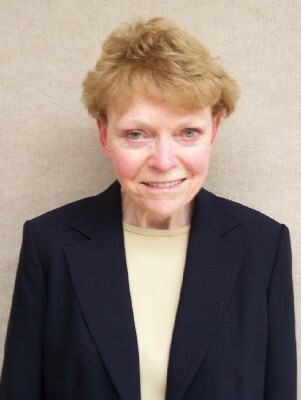
How long have you been a member of the GCWS and why did you join?
I joined the GCWS in 2007 (or 08). I was taking painting classes with Mary Lou DeMar and she introduced the class to this group where members could see quality monthly demos and attend mini-workshops for a mere $10. Having recently retired and being new to the area, this opportunity was a real gift.
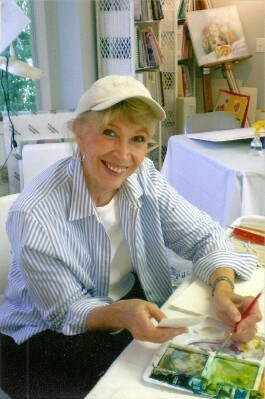
Have you held any positions with the GCWS; if so, what positions?
I am currently finishing up two years as GCWS Program Chair. I love meeting artists and this job certainly widened my circle of artist-friends – both the guest speakers and club members. I also feel that joining any group involves giving as well as taking. As far as the time involved, I organized the duties to my own schedule. And working with artists to produce stimulating programs was fun!
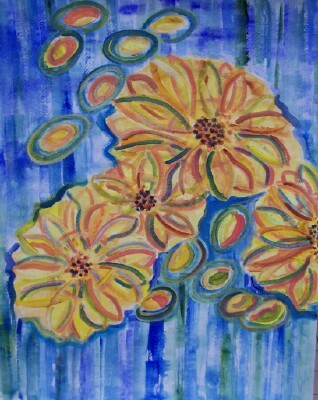
What are some of your artistic achievements?
Achievements? You’ve got to be kidding. I consider myself a beginner. It’s an achievement just to put something on paper for viewing. I do have a PhD in the Sociology of Art. Prior to my retirement from university teaching, I fooled around with hobby painting and took a short class every six years or so. But starting five years ago, I got hooked and began painting somewhat compulsively. I found such spiritual pleasure and satisfaction in it, perhaps partly because I have so much to learn. Prior to this moment, I have had no intention of selling my work. But the works are beginning to pile up and I am considering that possibility. I do want my work to be seen and am always pleased if someone happens to like it. This year I was asked by my framers, “Frame Design”, to exhibit two works in show of selected artist-clients.
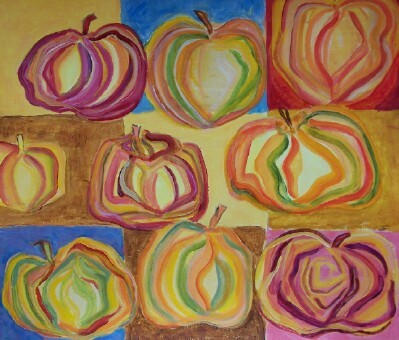
Describe your usual procedures for creating a painting.
Usual procedures. Hmmmm. The whole idea of “usual” runs against my reasons for painting. Having the opportunity to view paintings at the Louvre and other great museums, from a fairly young age, I grasped the larger possibilities of what art could be. For example, why stop with a picture of a landscape? Perhaps I could go farther in, take another path and explore what might be there in reality or in my imagination, or simply in my heart. So I don’t do a great deal of advance planning and rarely do a preliminary sketch. I read about art and artists all the time, and acquire ideas about what makes an interesting, or challenging, or expressive painting. Sometimes I am attracted by a painting in “Art News” or “Palette Magazine” or an art history book. My husband thinks I haunt museums – returning to see a show a 2nd or 3rd time. I like to create my personal interpretation of others’ works. Most often, I express my feelings – joy, fear, anxiety, contentment, sadness, loneliness and paint spontaneously. I am far more concerned with the meanings of a work than with technique. Creativity, authenticity and originality come from within. I am constantly experimenting on how to express contrasts, what values can do, the power of color, how to use rhythm and pattern and such. I try to be mindful of the elements as I work, but when I am in the zone, the painting pretty much takes over and I am just an instrument. I like to paint to music and sometimes dance around flailing the paintbrush in the air. I guess it’s a kind of madness.
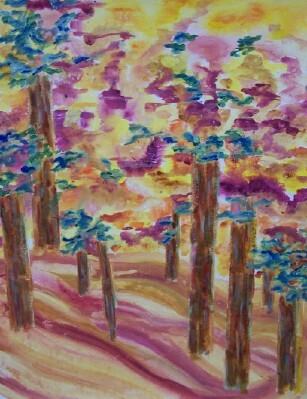
How long have you been painting.
I have been painting five years.
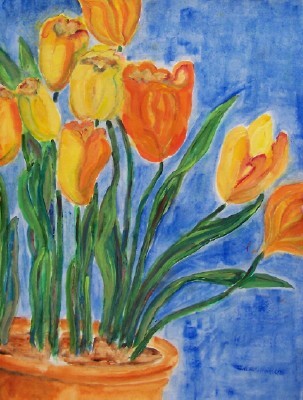
In what medium, other than watercolor or acrylic, do you work?
My main medium is acrylics. Through the encouragement of Barb Smucker, local artist-teacher, I now work in watercolor, gouache, ink, collage, oil pastel and mixed media. I’ll try anything. I avoid oils and pastels only because of the toxins.
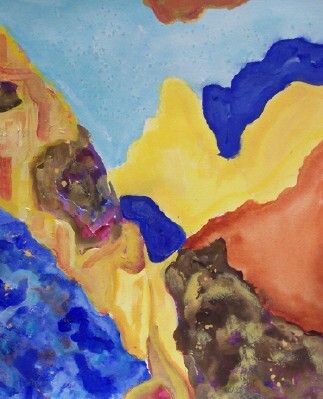
Where do you get your inspiration for paintings? I covered inspiration in the procedures section pretty well. I will say that I am constantly inspired by the artists around me from the smallest unknown beginner to the giants – Rrothko, Klee, Sean Sculley, Lawrence Harris, Kandinsky, Mondrian – that whole Blaue Reiter group and the Bauhaus. That period in Woody Allen’s film “Midnight in Paris” I would have loved to know them.
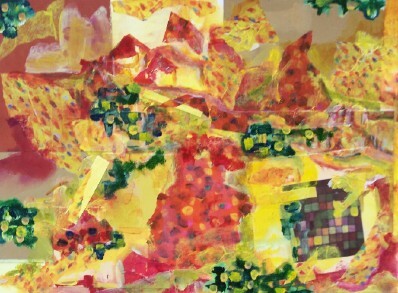
Are you a teacher? Not a teacher . . . except sociology of art, of course.
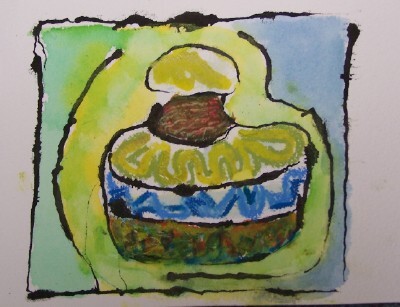
Where do you see yourself in the future? (i.e., is painting a hobby; will you enter shows; do you see yourself teaching?)
I do not see myself as teaching - been there, done that. I really see myself as a learner, a student, an experimenter and explorer.
I do not have a website or a blog at this point. Painting is very personal to me.
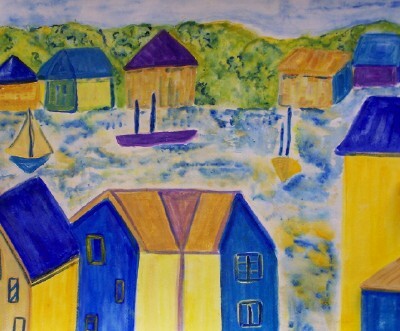
Is there anything else you would like for us to know about you and your art?
I hope I have made it clear that, to me, making art is different than making an objective picture. At his Maryland workshop last year, Skip Lawrence said (and I paraphrase): the techniques and elements of painting are the language of art, but what’s the story? How much more interesting to paint how I feel about this tree, or rock, or person, than to simply paint a tree, or rock or a person. Following Hans Hoffman, in recent years, I have been trying to paint the wind. I find this both thrilling and challenging.

